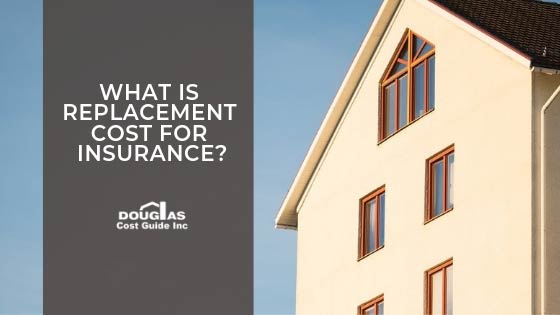Insurance terms and policies can seem complicated; replacement cost for insurance doesn’t have to be. Replacement cost for insurance is as it sounds: the amount of money it would cost to replace an item. When insuring your home for replacement cost, the amount of coverage listed on your policy is the dollar figure your insurance company has determined is required to replace your home. In short, the amount of money it would cost to completely rebuild your home from the ground up in the event of a total loss. If your home is currently insured for $600,000 replacement cost, your insurance company has calculated that your home would cost $600,000 to rebuild today, using modern materials, along with current construction technology and techniques.
What Is Covered By Replacement Cost?
Replacement cost for insurance is subject to the terms and conditions of your homeowner’s policy. The terms and circumstances of losses are stipulated in your policy. Some items, such as jewellery or furs, may have limits of coverage within your policy; its best to confirm coverage limits with your agent or broker. As for replacement cost for damage to your actual home, or contents outside of items subject to special limits, replacement cost covers everything. If you experience a covered loss, replacement cost applies to all physical items; that’s everything from floors to ceilings, drywall, light fixtures, furniture, clothing and everything in between.
How Does Replacement Cost Insurance Work?
The mechanics of replacement cost are fairly straight forward. Rather than applying depreciation to any damaged portions of your home, your insurance company simply pays for the repair or replacement. For example, during the spring thaw your sump-pump malfunctions and your basement floor is covered with two inches of water. This is every homeowner’s nightmare! Your carefully selected flooring is now waterlogged and ruined. How much money will you get for the ruined flooring? Will it be enough to replace it? With replacement cost coverage these are questions you don’t have to ask.
When facing these circumstances, your insurance company would pay to have your floor replaced with the same flooring you have, or with flooring of similar kind and quality if your existing flooring is no longer available. You don’t have to worry that your floor was five-years-old and may have had signs of wear and tear. Depreciation is not calculated when it comes to replacement cost. Your insurance company will simply pay for the new flooring and its installation.
Replacement cost at its core is designed to put you in the same position you were in prior to a loss. If you had high-quality, water-resistant laminate flooring in your basement, your insurance company will pay to have the old water-logged flooring removed, cover the cost of any required clean-up, and will pay to have the same flooring installed in your basement. It is your insurance company’s job to put you in the same position you were in before you experienced a loss. Replacement cost is designed to ensure this can and will happen.
How Do Insurance Companies Determine Replacement Cost?
Once you understand what replacement cost for insurance is and how it works, the natural next step is to wonder how in the world insurance companies determine replacement cost. The answer: they ask a lot of questions.
Insurance companies have specially designed systems they use to estimate the Replacement cost of your home. Once all of the necessary information is gathered; the system will determine your replacement cost for insurance.
- Square Footage: The largest factors considered in replacement cost are square footage and quality. Logically, larger homes would cost more in terms of material and labour to replace; therefore, the higher the square-footage the higher the replacement cost.
- Home Quality & Exterior: The quality of your home is also a factor; this takes into consideration the shape of the house, the type of foundation, the materials used in framing, the exterior finishes: brick, siding, stone, stucco, etc.
- Interior Finishes: Interior finishes are also considered: Is it drywall or plaster? What type of flooring, countertops, windows, doors? Marble countertops and solid hardwood doors will cost more to replace than the standard Formica countertops and builder-grade doors.
The list of questions and level of detail considered to determine replacement cost for insurance is seemingly endless.
Reviewing these details with your insurance company is vitally important to ensure you have ample coverage to protect your home. Pondering all these details can be an overwhelming task. Leaving the fate of your most valued possession in the hands of an insurance system can also be anxiety inducing.
Accurately Estimate Your Home’s Replacement Cost
The Douglas Residential Cost Guide can help alleviate your fears. The Douglas Residential Cost Guide is a finely-honed system developed over several years by leading industry experts. Utilizing Douglas Residential Cost Guide gives homeowners the power to complete an extensive review of their home and calculate home replacement cost before ever calling their insurance company. It’s peace of mind for homeowners; ensuring your home and your family are properly protected in the face of any challenge. Let Douglas Residential Cost Guide help you protect your home today.

